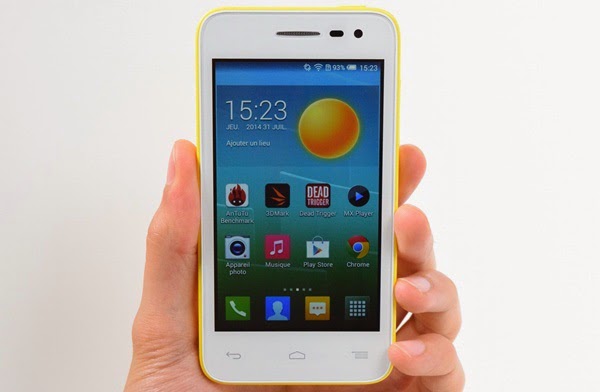April 2015 - The benchmarks and battery hold it back, but they're not unreasonable given the price. You'll find better specs in Chinese phones, but if you don't need a dual-SIM phone and you want the peace of mind of a proper UK warranty, it's a solid choice.
Graphics, tested at the default, well we have collected a lot of data from the field directly and from many other blogs so very complete his discussion here about April 2015, on this blog we also have to provide the latest automotive information from all the brands associated with the automobile. ok please continue reading:
Well we guys have spent Huawei Ascend Y220-U00 official firmware 100% Working Free Download approximately a grand on the new "Macbook Pro". How do you fancy spending a lot more than that time, all over once again, to mod your laptop to resembles a Microsoft Surface?
From the the cult-like Apple worship practiced through covens of fanbois and girls, we could reckon in which few people would undertake the offer associated with turning their Macbook into an Microsoft Surface.
But the optimistic bods behind a new project called Mod-book beg to differ. They reckon men and women will spend approximately $2, 999 to show their "Macbook Pro" into a Surface knock-off, recognizing Apple authority to wrench over screen and put it to use as a tablet.
Obviously, there is a finance drive now running on Kickstarter. It may even more successful. So how do the ModBook bods over in Chicago propose to desecrate your awesome shiny new "Apple" product?
So, The Modbook Pro X, like it is predecessors, strives to become respectful citizen from the Mac OS ecosystem, " it is creators wrote. "Our hardware modifications are designed to preserve native functionality as a way not to the base operation normal system.
"As Our most experienced Mac developers create the software application and hardware to the Modbook Pro, in tight adherence to all or any applicable Apple Mac Developer guidelines in addition to Apple design rules for accessories to products."
What this means is that you send ModBook a Macbook and they send it back as a two-piece device, with the high-resolution screen detachable from the keyboard.
It also have a "digitizer pen" to permit guide on-screen scribbing. This gadget offers 2,048 Pressure levels, pen tilt and rotate functionality and a digital eraser.
Various keyboard have got shortcuts buttons on the back, permitting you to rapidly navigate away from sensible pages when a wife/manager/guardian/delicate member of family walks past.
On Kickstarter you can purchase the mod at an expense of $2,299, which is lessened from the original cost of $2,999. Then again, on the off chance that you can't face purchasing a Macbook, you can please up to $5,689 to get a high controlled Apple smart phone which comes preruined, an aggregate which is $800 lower than the possible expense of $6,588, which will get you a Modbook with 2.8ghz Quade-Core Intel i7 processor, Intel Iris Pro 5200 and NVIDIA Geforce GT 750m resolutions, 16gb RAM and 512gb Pcie streak storage drive.
You can just about imagine them considering purchasers with more cash than sense.
"I've to say, truly, what does Jony Ive or his group know in any case?" they may ask. "Why would anybody with serious cash trust one of the most respected design squads in the world, when they could just spend $6,000 and get a mashed-up Macbook from us?"
For register your interest in destroying that lovely Macbook of yours, pledge some cash at Kickstarter. With 34 days to go and $51,773 promised out of an aggregate objective of $150,000 (at the time this story was delivered), there are possibly people rich enought to do this.
To them we say: go forward and use. Be that as it may give us a tenner to start with, if you don't mind as we can tell you've got a couple of sway thumping about. ®















+v6.12.10.3+Full+Including+Crack+with+Key.jpg)





